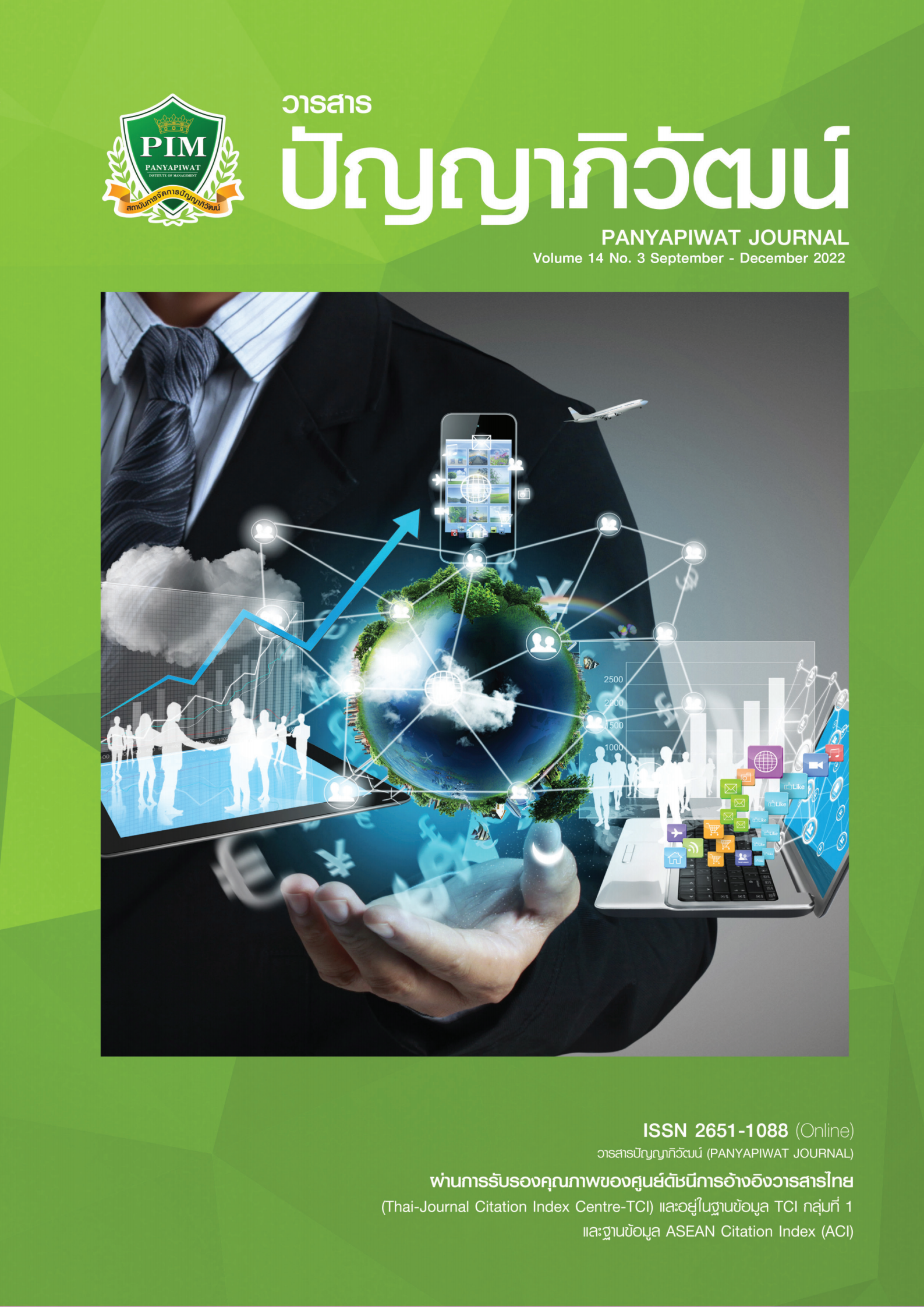แนวความคิดในการช่วยเหลือลูกหนี้บุคคลธรรมดาผ่านกระบวนการล้มละลาย
Main Article Content
บทคัดย่อ
การล้มละลายโดยสมัครใจของลูกหนี้บุคคลธรรมดา คือ กระบวนการหนึ่งในกฎหมายล้มละลายที่มีที่มาจากแนวความคิดการเริ่มต้นใหม่ (Fresh Start) ซึ่งอนุญาตให้ลูกหนี้ที่ไม่สามารถชำาระหนี้ได้ยื่นคำร้องขอล้มละลายได้และปัจจุบันกลายมาเป็นกระบวนการหนึ่งในกฎหมายล้มละลายที่เป็นสากล โดยแนวความคิดนี้เห็นว่าลูกหนี้ไม่สามารถชำระหนี้ได้เพราะการเจ็บป่วย การประสบอุบัติเหตุ หรือตกงานจากวิกฤติเศรษฐกิจนั้น ล้วนแต่เป็นลูกหนี้ที่น่าเห็นใจ ซึ่งมักจะเรียกลูกหนี้เหล่านี้ว่า ลูกหนี้ผู้สุจริตแต่โชคร้าย ดังนั้นการที่ลูกหนี้เหล่านี้ยอมมอบทรัพย์สินทั้งหมดที่มีขณะนั้นเพื่อชำระหนี้แล้ว จึงควรจะได้รับโอกาสใหม่ในชีวิตพร้อมการปลดเปลื้องหนี้สินไปเพื่อความเพียรพยายามในอนาคต กระบวนการนี้จะช่วยเหลือลูกหนี้ให้ปลดเปลื้องจากภาระหนี้สินที่กดขี่และผลักดันให้ลูกหนี้กลับไปตั้งใจหาเลี้ยงชีพเพื่อดำรงชีวิตต่อไป ซึ่งจะส่งผลให้เป็นการลดภาระทางสังคมที่ต้องดูแลลูกหนี้เหล่านี้และคืนหน่วยผลิตสู่ระบบเศรษฐกิจอีกด้วย เพราะเหตุว่าลูกหนี้ที่มีอายุน้อยย่อมมีศักยภาพเริ่มต้นชีวิตใหม่ได้ง่าย ในขณะเดียวกันลูกหนี้ที่มีอายุมาก เกษียณจากงาน หรือมีรายได้จำกัดก็ย่อมได้รับโอกาสปลดเปลื้องหนี้สินไปด้วย การให้สิทธิลูกหนี้บุคคลธรรมดาเข้าสู่กระบวนการล้มละลายโดยสมัครใจ และกำหนดหลักเกณฑ์ที่สะดวกรวดเร็ว และไม่เสียค่าใช้จ่ายเกินควร รวมถึงมีหน่วยงานช่วยเหลือ นอกจากจะเป็นทางเลือกหนึ่งในการแก้ไขปัญหาหนี้สินแล้ว ยังทำให้กฎหมายล้มละลายเป็นสากล มีประสิทธิภาพและเป็นธรรม สามารถช่วยลดอุปสรรคในการดำรงชีวิตและการประกอบอาชีพตามนโยบายการปฏิรูปกฎหมายและกระบวนการยุติธรรมที่ประกาศไว้ในรัฐธรรมนูญแห่งราชอาณาจักรไทย พ.ศ. 2560 อีกด้วย
Article Details

อนุญาตภายใต้เงื่อนไข Creative Commons Attribution-NonCommercial-NoDerivatives 4.0 International License.
“ข้าพเจ้าและผู้เขียนร่วม (ถ้ามี) ขอรับรองว่า บทความที่เสนอมานี้ยังไม่เคยได้รับการตีพิมพ์และไม่ได้อยู่ระหว่างกระบวนการพิจารณาลงตีพิมพ์ในวารสารหรือแหล่งเผยแพร่อื่นใด ข้าพเจ้าและผู้เขียนร่วมยอมรับหลักเกณฑ์การพิจารณาต้นฉบับ ทั้งยินยอมให้กองบรรณาธิการมีสิทธิ์พิจารณาและตรวจแก้ต้นฉบับได้ตามที่เห็นสมควร พร้อมนี้ขอมอบลิขสิทธิ์บทความที่ได้รับการตีพิมพ์ให้แก่สถาบันการจัดการปัญญาภิวัฒน์หากมีการฟ้องร้องเรื่องการละเมิดลิขสิทธิ์เกี่ยวกับภาพ กราฟ ข้อความส่วนใดส่วนหนึ่งและ/หรือข้อคิดเห็นที่ปรากฏในบทความข้าพเจ้าและผู้เขียนร่วมยินยอมรับผิดชอบแต่เพียงฝ่ายเดียว”
เอกสารอ้างอิง
Australian Financial Security Authority. (2021). Bankruptcy: Consequences of bankruptcy. https://www.afsa.gov.au/insolvency/cant-pay-my-debts/consequences-bankruptcy
Bank of Thailand. (2015). Household Debt. Bankers’ Talk, 3(1), 1. [in Thai]
Bank of Thailand. (2018). Annual report 2018. Bank of Thailand. [in Thai]
Bank of Thailand. (2020). News of bank of Thailand. https://www.bot.or.th/Thai/PressandSpeeches/Press/2020/Pages/n3763.aspx
City Bar Justice Center. (2007). Personal bankruptcy: Is it right for you? City Bar Justice Center.
Hannakacharoen, P. (2005). Voluntary bankruptcy for Individual [Master’s thesis]. Chulalongkok University. [in Thai]
Harris, J., Gronow, M., & Anderson, H. (2015). Insolvency law: Commentary and materials. Thomson Reuters.
Insolvency Service. (2020). Guidance: Getting a debt relief order. https://www.gov.uk/government/publications/getting-a-debt-relief-the order/getting-a-debt-relief-order
International Business Publications. (2010). United States bankruptcy regulations and procedures handbook volume 1 strategic information and regulations. USA International Business Publications.
Jullamon, K. (2013). Insolvency of individual debtors in Thailand. COJ Comparative Law Journal, 5(1), 152-158. [in Thai]
Kunkeaw, A. (2019). Individual voluntary insolvency petition. Academic Documentary in the Program of Senior Executives on Justice Administration, 23, 8-15. [in Thai]
Legal Execution Department. (2017). Research report of debt payment proportion of creditors in bankruptcy cases. Legal Execution Department. [in Thai]
Legal Services Commission of South Australia. (2021). Who is involved? https://lawhandbook.sa.gov.au/ch04s01s01.php
Mahakun, V. (2014). Explanation: Bankruptcy and rehabilitation law (14th ed.). Niti Bannakan. [in Thai]
Offce of the National Economic and Social Development Council. (2020). NESDC’s news. https://www.nesdc.go.th/ewt_dl_link.php?nid=10958 [in Thai]
Prokati, K. (2012). Development Guideline of justice administration of civil and commercial tobe worth. Journal of Thai Justice System, 5(12), 27. [in Thai]
Rattanapijit, S. (2016). Research structure of legal execution improvement in bankruptcy cases to be in accordance with the universal measure (fnal report). Legal Execution Department. [in Thai]
Rose, D. (1999). Lewis’ Australian bankruptcy law (11th ed.). LBC Information Services.
Seay, L., & Milman, D. (2002). Annotated guide to the insolvency legislation: Insolvency acts 1986 and 2000 company directors disqualifcation act 1986 ec regulation on insolvency proceeding 2000 insolvency rules 1986 (6th ed.). Thomson Sweet & Maxwell.
Simkovic, M. (2009). The effect of BAPCPA on credit card industry profts and prices. American Bankruptcy Law Journal, 83(1), 1.
Solomon, R. (2021). How not to lose your home when going bankruptcy in Japan. https://beaconreports.net/en/going-broke-japan/
Srilajak, S. (2013). Bankruptcy problems of the person who is not a commercial business entrepreneur [Master’s thesis]. Dhurakij Pundit University. [in Thai]
Steele, S., & Jin, C. (2017). Some suggestion from japan for reforming Australia’s personal bankruptcy. QUT Law Review, 17(1), 83.
Supreme Court of U.S. (1934).Local Loan Co. v. Hunt, 934. http://www.law.cornell.edu/supremecourt/text/292/234#fn1_ref
Symes, C. F., & Duns J. (2009). Australian insolvency law. Lexisnexis Butterworth.
Tabb, C. J., & Brubaker, R. (2010). Bankruptcy law principle, policies, and practice (3rd ed.). Matthew Bender & Company.
United Nations Commission on International Trade Law. (2004). Legislative guide on insolvency law, 64-67. https://www.uncitral.org/pd f/english/texts/insolven/05-80722_Ebook.pdf
World Bank. (2020). Doing business 2020: Comparing business regulation in 190 economies. https://www.doingbusiness.org/en/doingbusinessa
Worldometers. (2021). COVID-19 coronavirus pandemic. https://www.worldometers.info/coronavirus/
Ziegel, J. (2006). Facts on the ground and reconciliation of divergent consumer insolvency
philosophies. Theoretical Inquiries in Law, 7(2), 313-314. http://www7.tau.ac.il/ojs/index.php/til/article/view/592/555


